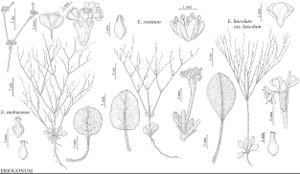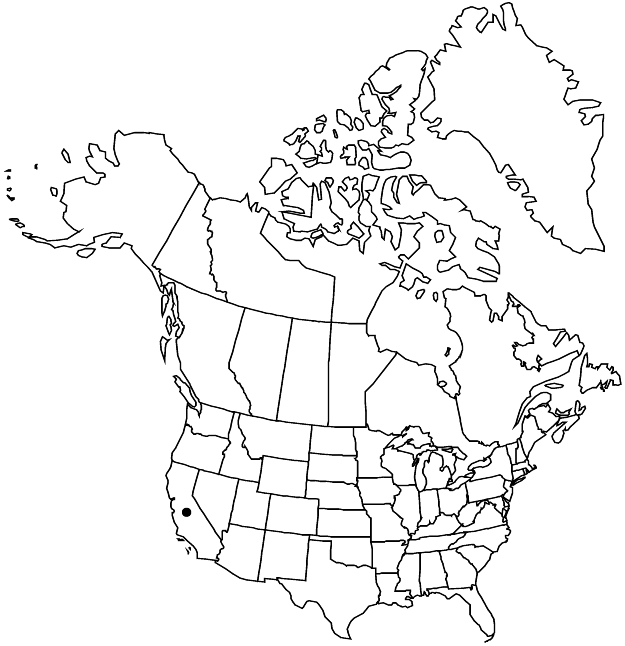Difference between revisions of "Eriogonum mohavense"
Proc. Amer. Acad. Arts 12: 266. 1877.
FNA>Volume Importer |
FNA>Volume Importer |
Revision as of 22:38, 16 December 2019
Herbs, erect to spreading, 1–3 dm, glabrous, greenish to yellowish green. Stems: aerial flowering stems erect, 0.2–1 dm, glabrous. Leaves basal; petiole 1–4 cm, tomentose; blade oblong to rounded, (0.4–)0.6–2 × (0.4–)0.6–2 cm, white-tomentose and grayish on both surfaces, or slightly less so adaxially. Inflorescences cymose, diffuse, spreading, 5–25 × 5–20 cm; branches glabrous; bracts 0.5–1.5 × 1–2 mm. Peduncles absent. Involucres terminal at tips of slender branchlets at least proximally, not appressed to branches, turbinate, 1.7–2 × 1–1.5 mm, glabrous; teeth 5, erect, 0.5–0.9 mm. Flowers 0.7–1 mm; perianth yellow, glabrous, infrequently glandular proximally; tepals monomorphic, narrowly oblong to elliptic; stamens included to slightly exserted, 0.8–1.2 mm; filaments pilose proximally. Achenes dark brown to nearly black, lenticular, 1–1.2 mm.
Phenology: Flowering May–Sep.
Habitat: Sandy to infrequently clayey flats and slopes, saltbush and creosote bush communities
Elevation: 600-1200 m
Discussion
Of conservation concern.
Eriogonum mohavense is typically local and infrequent, and only rarely locally common. It is restricted to the northwestern corner of the Mojave Desert in southeastern Kern, northeastern Los Angeles, and northwestern San Bernardino counties. It occurs also just inside Inyo County. An 1882 C. C. Parry collection (NY) supposedly from San Diego is discounted as to location.
Selected References
None.

